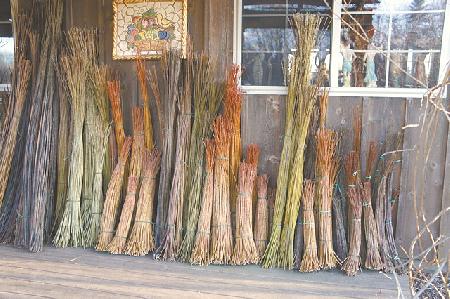 About 4 years ago Howard Peller planted 50 varieties of willow trees on two acres of his Roseville, Ohio, farm. Each winter since then he harvests the new growth for the baskets he weaves and to sell to customers for a variety of uses.
About 4 years ago Howard Peller planted 50 varieties of willow trees on two acres of his Roseville, Ohio, farm. Each winter since then he harvests the new growth for the baskets he weaves and to sell to customers for a variety of uses.
Coppicing (growing woody plants) is an ancient practice that Peller studied while living and studying in Germany, along with basket weaving.
Peller used to be head of design for baskets at The Longaberger Company. He realized there could be a market for willow to make baskets, which he sells mostly at local farmers markets.
Thanks to his website, he has also developed a national market for willow itself. The smallest diameter dry sticks (1/8 to 1/4 in. dia.) are used for basket making. Larger diameter green 7-ft. sticks are used for living fences and structures. There is a renewed interest in building woven wattle fences and using willow for practical items such as tomato cages and even boats.
Willow trees multiply quickly. The 7,000 single sticks he originally planted have multiplied at the roots, sending up as many as 60 shoots. Each winter, Peller cuts the willow with a pruner and old-fashioned tools such as a billhook. He dries the basket material for 2 years to ensure baskets won't shrink after they're made. The longer, living fence sticks are put in a cooler to be shipped in spring and early summer. The variety of species gives customers color, texture and tensile strength options. Most willow trees thrive anywhere that has at least a short dormancy period, Peller says.
Managing it all - both growing the material and weaving it - is challenging, Peller says. People generally do one or the other. But he finds the work satisfying and meaningful because he can grow something on his land to make a living.
"For me the big thing is finding harmony living with nature. It doesn't jive with today's world, but it's something I want to do,"he says.
1-800-834-9665
Willow Tree Farming Pays Off For Basket-Weaving Entrepreneur
FARM SHOW Magazine » Willow Tree Farming Pays Off For Basket-Weaving Entrepreneur
Willow Tree Farming Pays Off For Basket-Weaving Entrepreneur
